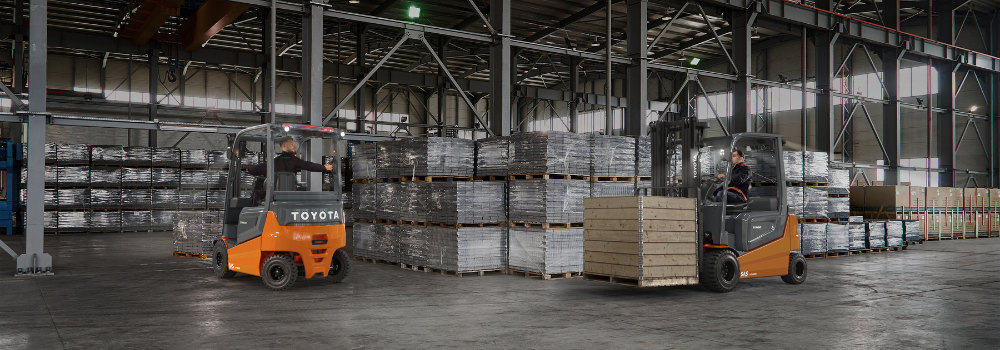At Toyota, we are committed to helping our customers reduce accidents and minimise damage to goods within their material handling environment. It is important to prioritise employee and operator safety through innovative safety applications and ergonomic features. Following best practices and utilising advanced safety technologies is crucial to ensuring maximum safety, stability, and confidence in your operations.
In this blog, we highlight common counterbalance forklift safety risks and how you can help mitigate them.
Common Safety Risks When Operating a Forklift Truck
Exceeding Load Capacity
A counterbalance forklift is designed to carry loads up to a specific weight limit. Exceeding this capacity can make the forklift unstable, significantly increasing the risk of tipping over. Operators must always ensure the weight of the load does not exceed the given load capacity of the truck, as overloading can lead to accidents, equipment damage, costly repairs, and downtime. The load capacity of the forklift can be found on the truck’s capacity plate.
Unsafe Loading and Transporting
The stability of the forklift is greatly affected by the load it carries. An unevenly distributed load or a high centre of gravity can cause instability. Understanding the forklift stability triangle and centre of gravity is crucial for safe operation. When operating a counterbalance forklift always:
- Distribute loads evenly.
- Operate on a stable surface.
- Avoid fast sudden movements that may shift the load.
Blind Spots
Forklift blind spots pose a significant safety risk. When carrying large or heavy loads, an operator’s view may be obstructed, making it difficult to see pedestrians or obstacles. To mitigate the risks associated with blind spots, there are many safety systems available that can aid driver awareness.
Speeding
Excessive speed is a major safety concern in material handling environments as higher speeds increase the likelihood of crashes with racking, and other machinery, resulting in costly repairs and downtime. In addition to the risk of damaging goods and the vehicle, speeding forklifts can also cause serious accidents. To mitigate these risks, it is important to ensure all operators are fully trained on safe driving. It is also worth considering a fleet management system such as I_Site through this system you can set speed restrictions, track driver behaviour and set parameters to ensure only authorised personnel can operate the forklifts.
Safety built in
At Toyota, we believe that a safe workplace is a productive workplace. To enhance safety in your operations, our counterbalance trucks are equipped with a range of advanced safety systems, either as standard features or optional attachments.
For over 25 years, the Toyota System of Active Stability (SAS) has addressed and continues to address loading and transporting challenges. All Toyota counterbalance trucks are fitted with Toyota’s patented System of Active Stability (SAS). SAS continuously monitors key performance parameters, such as mast control, lateral stability, and fork level, reducing the risk of accidents, allowing operators to work with confidence, and maintaining high productivity while minimising damage.
